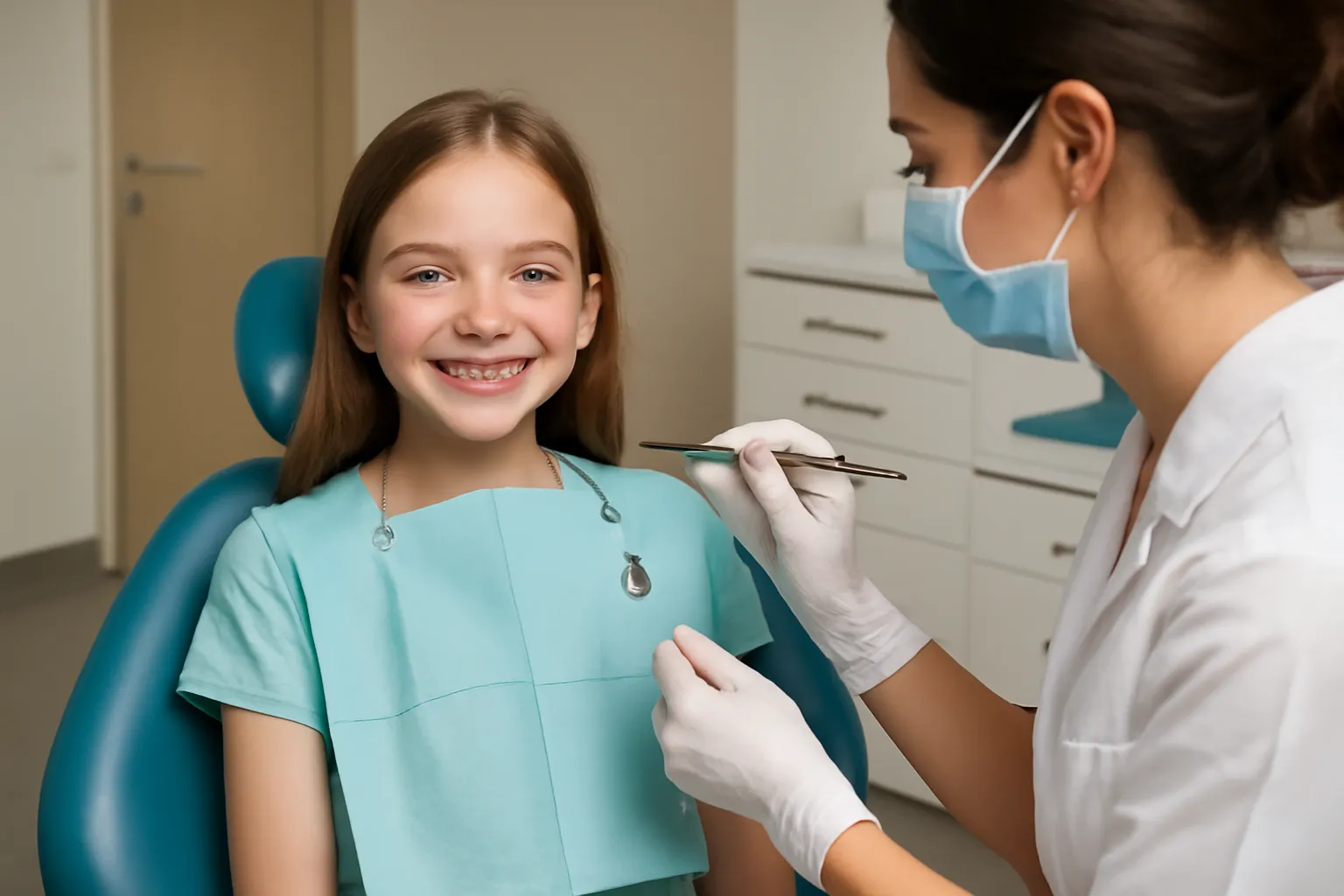Are you curious about when to start your child’s orthodontic journey? Discover everything about elementary school teeth correction, education, and associated costs in this guide. Are braces necessary early on?
Introduction: The Importance of Early Teeth Correction
Teeth correction in elementary school can have long-lasting benefits for children. Starting early can prevent more serious dental issues down the road, which is why many parents consider orthodontics as soon as their child’s permanent teeth begin to emerge. However, the decision to begin orthodontic treatment at this age requires careful thought and understanding of the process.
This article will guide you through the essential elements of elementary school teeth correction, from understanding why it’s important to the potential costs involved. We’ll also discuss educational resources and when is the best time to consult an orthodontist.
Elementary School Teeth Correction
Why Early Intervention is Important
Children’s dental health during their elementary school years plays a crucial role in their overall development. Early correction of misaligned teeth can make a significant difference in their future oral health. The key to success lies in identifying issues such as overcrowding, misalignment, or bite problems while the teeth and jaw are still growing.
Braces or other orthodontic treatments during elementary school years are designed to guide the development of the teeth and jaw, preventing the need for more extensive treatments later on. For instance, conditions like overbites, underbites, or crossbites can be more easily corrected when the child’s bones are still growing, as it’s much harder to adjust adult teeth.
Many parents wonder about the right time to start treatment. The American Association of Orthodontists (AAO) recommends an initial orthodontic evaluation by age 7. At this age, an orthodontist can assess the child’s bite and jaw structure to determine if any issues need to be addressed. This doesn’t mean that treatment will begin at age 7, but it’s a great starting point to monitor potential problems.
Types of Treatments Available
Several types of orthodontic treatments are suitable for children, depending on the severity and nature of the dental issues they face. These include:
-
Braces The most common form of orthodontic treatment, which can be metal or clear braces. These work by gradually moving the teeth into the correct position.
-
Space Maintainers These are often used when a child loses a baby tooth prematurely to maintain the space for the permanent teeth.
-
Palatal Expanders These help to widen the upper jaw if it’s too narrow, allowing more room for the teeth to align properly.
In some cases, the orthodontist may recommend more specialized treatments like headgear, which may be necessary for more complex cases.
Learn More About Early Teeth Correction
Elementary School Teeth Education
Educating Children About Oral Hygiene
Once orthodontic treatment begins, it’s essential to educate children about maintaining good oral hygiene. This is especially important when wearing braces, as food can get trapped in the wires and brackets. Poor hygiene can lead to plaque buildup, which can cause tooth decay and gum disease.
As a parent, one of the most important steps is to ensure your child understands the significance of brushing and flossing. Regular brushing with fluoride toothpaste and using specialized flossing tools designed for braces can help maintain a clean mouth during orthodontic treatment. Children should also be taught about avoiding sticky or hard foods, which can damage braces or cause discomfort.
Furthermore, educating your child about the importance of regular checkups with the orthodontist is key. These visits allow the orthodontist to monitor progress and make necessary adjustments to ensure the treatment is working as planned.
Involving Children in the Process
One of the challenges of orthodontic treatment is keeping children motivated and engaged. Encouraging your child to ask questions and be involved in their treatment plan can foster a sense of responsibility. Some children may even want to track their progress, and orthodontists often provide tools to help them stay excited about the process, such as color options for their braces and rewards for achieving milestones.
In addition, teaching children about how proper oral care impacts their smile and health will help them understand why they are undergoing treatment. It’s a great idea to make the experience positive and empowering rather than something they dread.
Tips for Teaching Kids Oral Hygiene
Elementary School Teeth Correction Cost
Understanding the Financial Aspect
The cost of teeth correction in elementary school can vary widely depending on several factors, including the type of treatment required, the severity of the issue, and the region where treatment is being provided. On average, braces for children can cost anywhere between $3,000 and $7,000.
Factors that influence the cost of treatment include:
-
Type of Braces Traditional metal braces are generally less expensive than clear aligners or ceramic braces.
-
Duration of Treatment The longer the treatment lasts, the more it will cost. If additional procedures such as extractions or space maintainers are needed, this can also add to the cost.
-
Orthodontist’s Expertise Highly experienced orthodontists may charge higher fees due to their expertise and reputation.
-
Geographic Location Costs can also differ depending on the area, with urban areas typically having higher fees than rural areas.
In addition to the initial cost of braces, there are ongoing costs for maintenance, which include regular visits to the orthodontist for adjustments. Most treatments require visits every four to six weeks to ensure that the braces are working effectively.
Insurance and Payment Options
Many dental insurance plans cover a portion of orthodontic treatment, though the extent of coverage can vary. It’s important to review your plan and confirm what is covered before beginning treatment. Some orthodontists also offer payment plans to help manage the costs, breaking down the payments into monthly installments.
Additionally, some families may be eligible for flexible spending accounts (FSAs) or health savings accounts (HSAs) that can help offset the costs of treatment. It’s worth consulting with the orthodontist and your insurance provider to fully understand your options.
Explore Financing Options for Teeth Correction
Conclusion
Early orthodontic intervention is an important part of maintaining your child’s oral health. By addressing issues like crooked teeth, overbites, or other dental irregularities during elementary school, parents can help ensure that their child’s teeth develop properly. Whether it’s through braces, palatal expanders, or other treatments, the goal is to promote better health and a more confident smile.
While the cost of treatment can be a concern, it’s essential to look into insurance coverage, payment plans, and financing options to make the process more affordable. Educating your child about the importance of oral hygiene and getting them involved in their treatment plan can make the experience smoother and more successful.
Ultimately, investing in your child’s dental health now can lead to fewer issues in the future, making it a worthwhile decision for their overall well-being.






